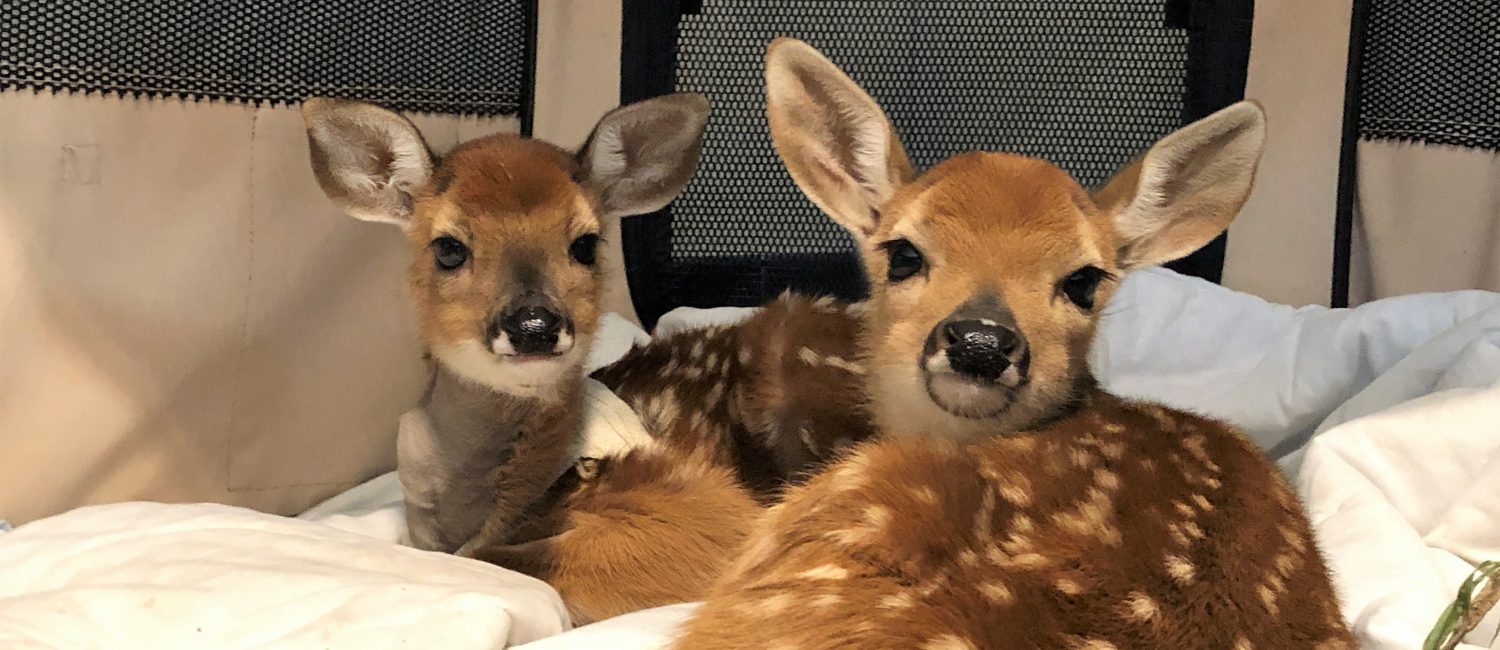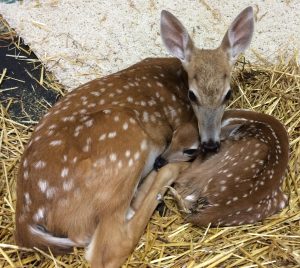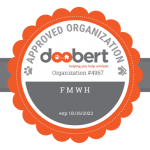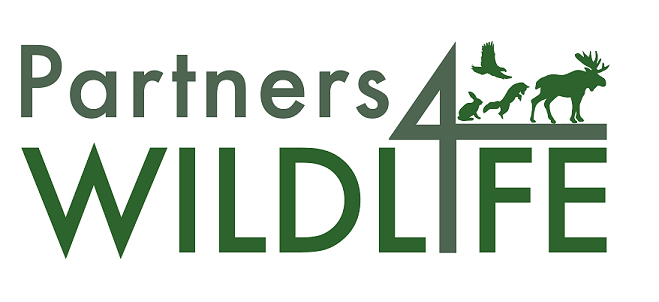
White-tailed Fawn
May 1, 2020| Updates|
White-tailed deer fawn have been born.
Here’s what you need to know if you or someone else
finds a baby.
We are currently receiving dozens of calls every day regarding fawns that appear to be orphaned or abandoned. In 90% of these cases, there is no cause for concern.
Human interference often poses the greatest threat. Before you do anything else, please read the following:
 A tiny deer by itself is almost certainly not orphaned. It is doing exactly what it is supposed to do at this age—lie quietly and still and wait for mother to return.
A tiny deer by itself is almost certainly not orphaned. It is doing exactly what it is supposed to do at this age—lie quietly and still and wait for mother to return.
Mother deer may not be with baby, but she is not far away. She is watching you even if you can’t see her.
Fawn have been found under picnic tables, on porches, under bushes, next to sidewalks and next to roads. Newborn and very young fawn are weak and fragile and tire easily. They lie down when they are tired.
If you stumble upon a fawn lying quietly, leave the area quickly. Do not touch it, do not tell other people about it. Keep your dogs away from the area. By leaving the baby where it is you are keeping it safe and keeping it with its mother.
Nursing takes only a few minutes in the wild (see the video, below). While she nurses, the doe stimulates the fawn to defecate and urinate. If there is unusual activity and the doe is unable to go to the fawn undetected, she may wait until humans leave the area before she nurses her baby. A hungry baby will cry, or bleat—this only means mother is late visiting to feed.
Sometimes fawn lie down in a very dangerous place and must be moved. ALWAYS use gloves if you have to move a fawn from immediate danger.
Fawn are protected from predators both wild and domestic by their lack of scent and their coloring, which act as camouflage for an animal that is otherwise entirely vulnerable.
NEVER touch a fawn with your bare hands. The scent you leave behind won’t cause the mother deer to abandon her baby, but it will put the fawn in jeopardy of being found by a predator that picks up the human scent.
NORMAL: Fawn lies still, it may look at you and move its ears but does not jump up and run away when found. Its coat is sleek and its eyes are bright. Fawn does not have a dirty bottom and is not wandering and crying for hours. Fawn is not injured and is not in a dangerous place.
NOT NORMAL: Fawn is wandering and crying. Its coat looks rough, its bottom is dirty. Its eyes appear dull and sunken.
Unless a fawn is in immediate danger—do not touch it, pick it up or remove it from the area.
DON’T BE A KIDNAPPER! Mother deer invest everything in their babies. It is a very sad thing for them to lose them because a human didn’t understand that they were taking the baby from the mother.
For more information, see “Recognizing Orphanings and Injuries” on our Insights Page.
IF YOU HAVE ANY QUESTIONS, DON’T HESITATE TO CALL FOR ADVICE. We do not have time to answer questions about animal situations on Facebook, messenger or e-mail. Please call 262-248-5055 and leave a message. We WILL call you back as soon as possible. Keep an eye on the baby in the meantime. We know you care and are concerned.
Thank you.
In one month last year, we received calls about 73 newborn or young fawns that were reported orphaned but that were actually healthy and were kept with the mother.
© 2025 Fellow Mortals, Inc.
W4632 Palmer Road | Lake Geneva, Wisconsin 53147
NOTE: All Visits are by Appointment Only —
Phone: (262) 248-5055 to make an Appointment









